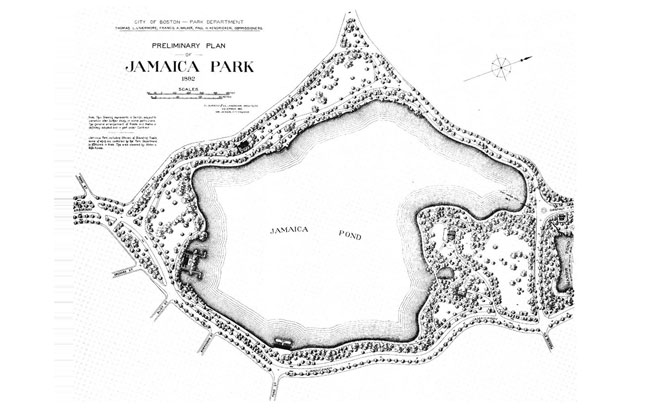
Preliminary Plan of Jamaica Pond, 1892
Jamaica Pond, which is 70 acres and 50-feet deep at some points, is a kettle hole formed by glacial action and fed by natural springs. It's the largest freshwater body in the Emerald Necklace. In the late 18th and early 19th centuries, Jamaica Pond functioned as a summer retreat to the country for wealthy Bostonians, with several summer homes constructed along its shores. By the mid-19th century, the pond supported an ice cutting industry and functioned as a reservoir.
Image: Frederick Law Olmsted National Historic Site 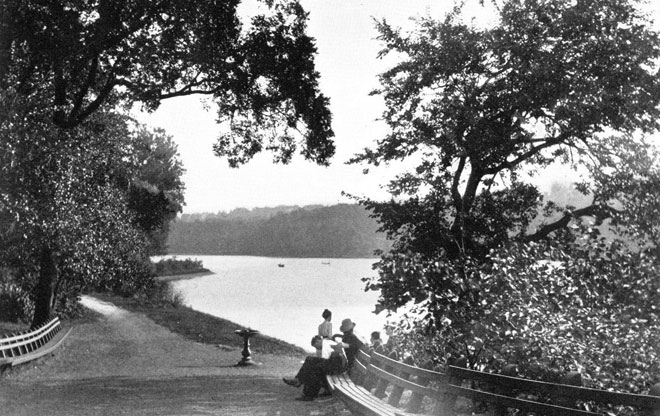
Perkins/Chestnut Street Entrance, 1900
In 1891, land was purchased by the city, the homes and ice-houses were
removed, except for two houses -- the Robert Morse house and “Pinebank”
the Edward Newton Perkins house -- which Olmsted hoped to incorporate
into the park as refectories. Olmsted developed “The Preliminary Plan of
Jamaica Pond” in 1892 and construction was complete by 1895.
Image: Frederick Law Olmsted National Historic Site 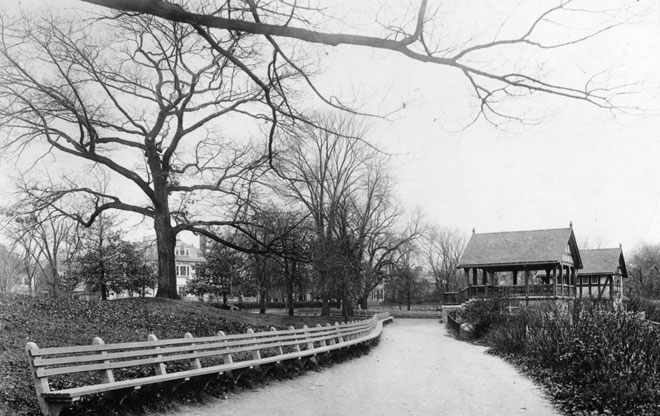
Boathouse and Bandstand, 1915
Jamaica Pond’s current boathouse and bandstand were built in 1913.
Image: Frederick Law Olmsted National Historic Site 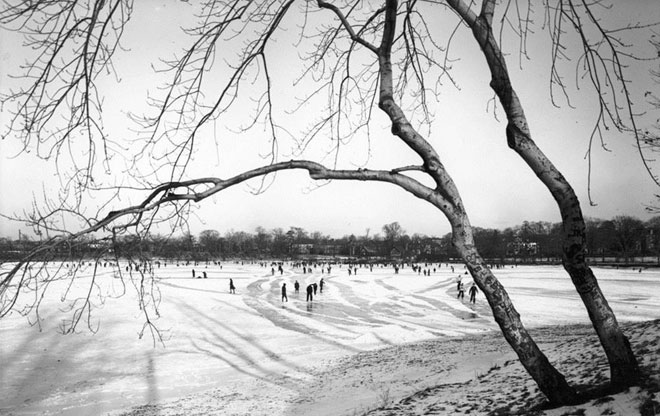
Ice Skaters on the Pond
During the 19th century, ice-skating was especially popular.
Image: Boston Public Library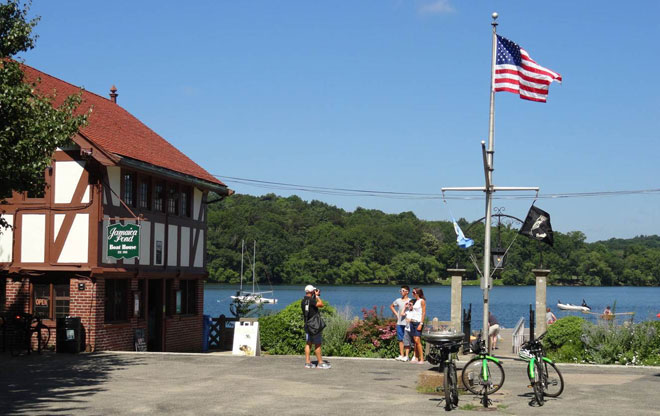
The Boathouse Today
Image: Marion Pressley 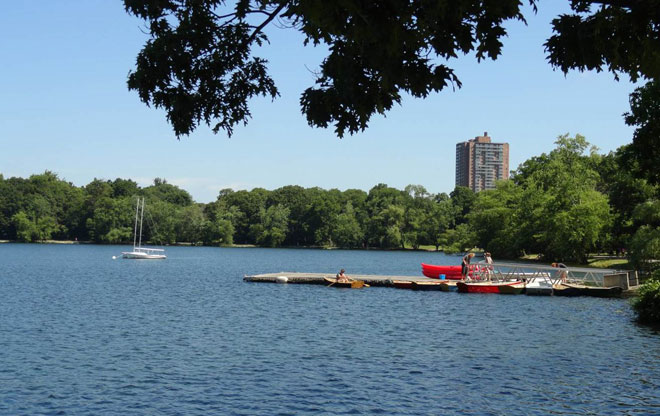
Out on the Water
Image: Marion Pressley 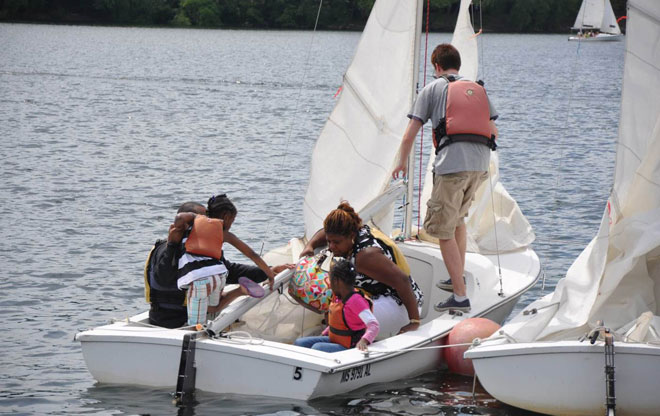
Getting Set for an Outing
Today boats are for rent at the pond in the summer.
Image: Margaret Dyson / Boston Parks and Recreation 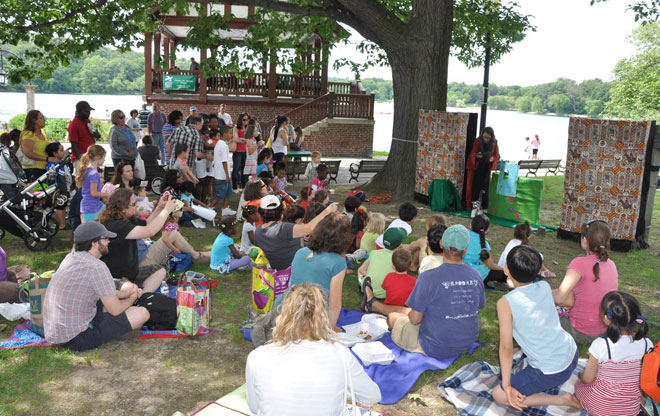
Children's Festival at the Bandstand
Today, festivals and events include children’s programs, theater performances. The Emerald Necklace Conservancy’s Summer Sundays in the Park also attracts visitors for outdoor Sunday evening concerts and movies.
Image: Margaret Dyson / Boston Parks and Recreation 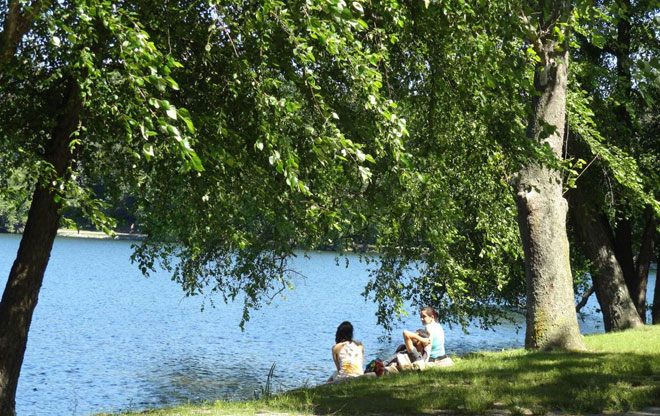
Relaxing at the Edge
Image: Marion Pressley 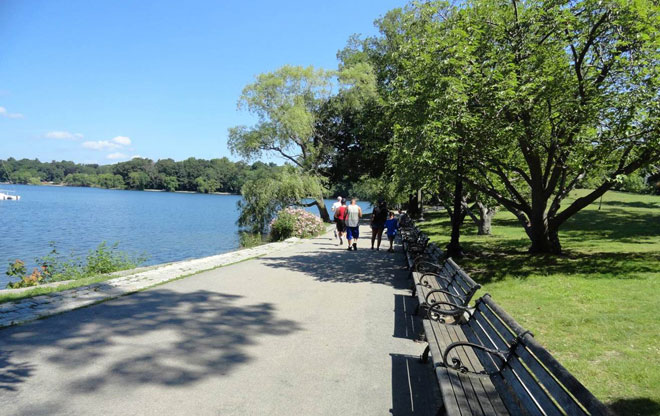
Joggers Circle the Pond
Image: Marion Pressley 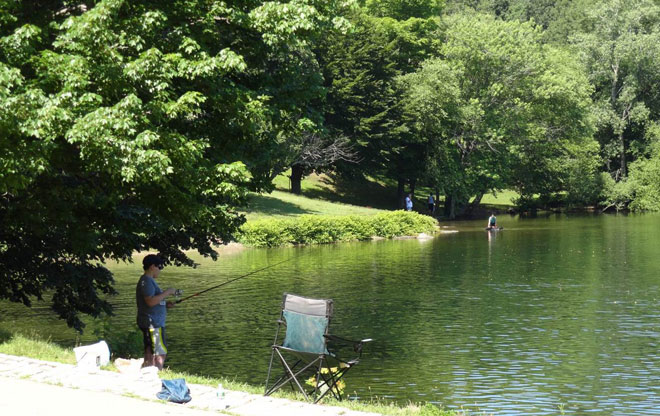
Stocked for Fishing
The state stocks the pond. Fishermen come here to catch trout and indigenous fish: pickerel, bass, hornpout and perch.
Image: Marion Pressley